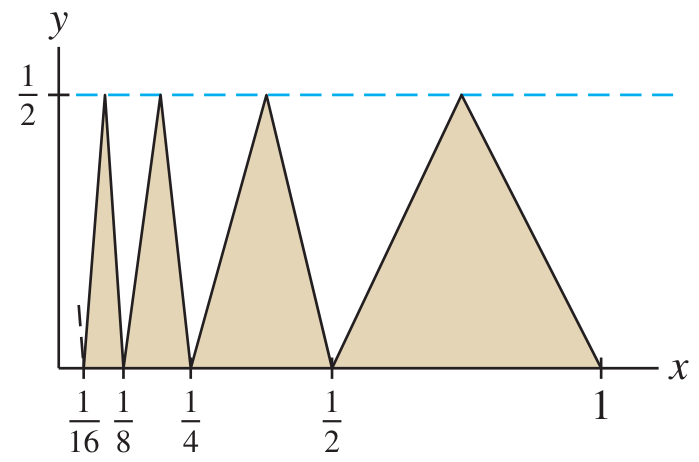01
General term of a series
Write this series in summation notation:
(Hint: Find a formula for the general term
.)
Solution
02
Geometric series
Compute the following summation values using the sum formula for geometric series.
(a)
(b)
Solution
07
(a)
The first term is
. The common ratio is . Therefore the sum:
(b)
Split numerator and obtain two geometric series:
Geometric series total sum formula:
Link to original
03
Geometric series
Compute the following summation values using the sum formula for geometric series.
(a)
(b)
Solution
02
(a)
First term:
Common ratio is
. Geometric series summation formula, always first term on top:
(b)
First term:
Common ratio:
Geometric series summation formula:
Link to original
04
Repeating digits
Using the geometric series formula, find the fractional forms of these decimal numbers:
(a)
(b)
Solution
05
(a)
First term:
. Common ratio:
Geometric series summation formula:
(b)
This is geometric starting with
. First term:
. Common ratio:
. Geometric series summation formula:
Add back the first term:
Link to original
05
Series from its partial sums
Suppose we know that the partial sums
of a series are given by the formula . (a) Compute
. (b) Find a formula for the general term
. (c) Find the sum
.
Solution
07
(a)
(b)
When
, this formula is undefined, because is undefined. But we know that:
(c)
Simply take the limit of
as : Link to original
06
Geometric series - partial sums and total sum
Consider the series:
(a) Compute a formula for the
partial sum . (You may apply the known formula or derive it again in this case using the “shift method.”) (b) By taking the limit of this formula as
, find the value of the series. (c) Find the same value of the series by computing
and and plugging into .
Solution
08
(a)
(1) Recall geometric partial sum formula:
This one may be easiest to recall:
(Note here
is the first term in the summation so it appears in the formula.)
(2) Identify ingredients in partial sum formula:
Rewrite summand to determine
and : We see that
and .
(b) Take limit:
Note A: The second term goes to zero:
.
(c)
Link to original
07
Total area of infinitely many triangles
Find the area of all the triangles as in the figure:
(The first triangle from the right starts at
, and going left they never end.)
Solution
06
Compute the first few areas, with
being the area of the largest triangle: This is a geometric series with
: Geometric series total sum formula:
Link to original
